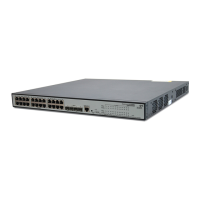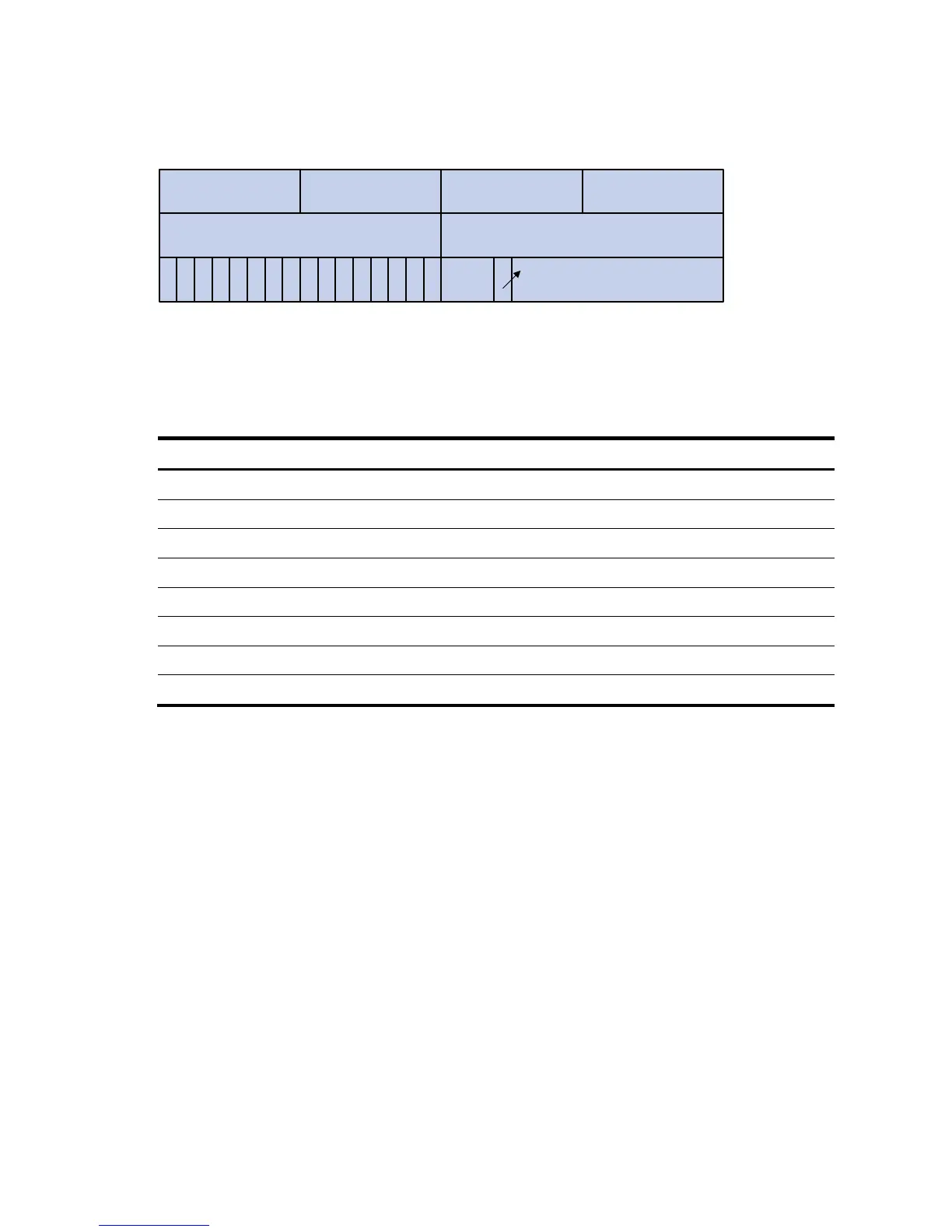427
As shown in b, the 4-byte 802.1Q tag header consists of the tag protocol identifier (TPID, two bytes in
length), whose value is 0x8100, and the tag control information (TCI, two bytes in length). c presents the
format of the 802.1Q tag header.
c. 802.1Q tag header
1 0 0 0 0 0 0 1 0 0 0 0 0 0 0 Priority VLAN ID
TPID (Tag protocol identifier) TCI (Tag control information)
Byte 1 Byte 2
0
Byte 3 Byte 4
CFI
7 5432107 5432106 6 7 5432107 54321066
The priority in the 802.1Q tag header is called 802.1p precedence, because its use is defined in IEEE
802.1p. 4 presents the values for 802.1p precedence.
4. Description on 802.1p precedence
802.1p precedence (decimal) 802.1p precedence (binary) Description
0 000 best-effort
1 001 background
2 010 spare
3 011 excellent-effort
4 100 controlled-load
5 101 video
6 110 voice
7 111 network-management
Queue scheduling
In general, congestion management adopts queuing technology. The system uses a certain queuing
algorithm for traffic classification, and then uses a certain precedence algorithm to send the traffic. Each
queuing algorithm is used to handle a particular network traffic problem and has significant impacts on
bandwidth resource assignment, delay, and jitter.
In this section, two common hardware queue scheduling algorithms Strict Priority (SP) queuing and
Weighted Round Robin (WRR) queuing are introduced.
SP queuing
SP queuing is specially designed for mission-critical applications, which require preferential service to
reduce response delay when congestion occurs.

